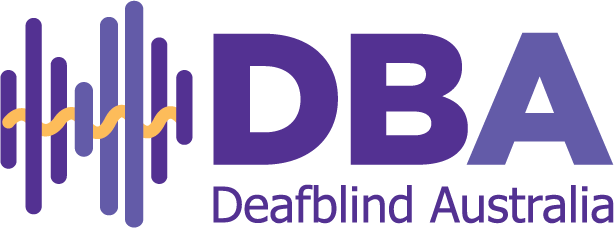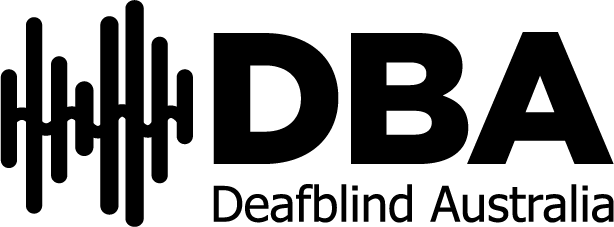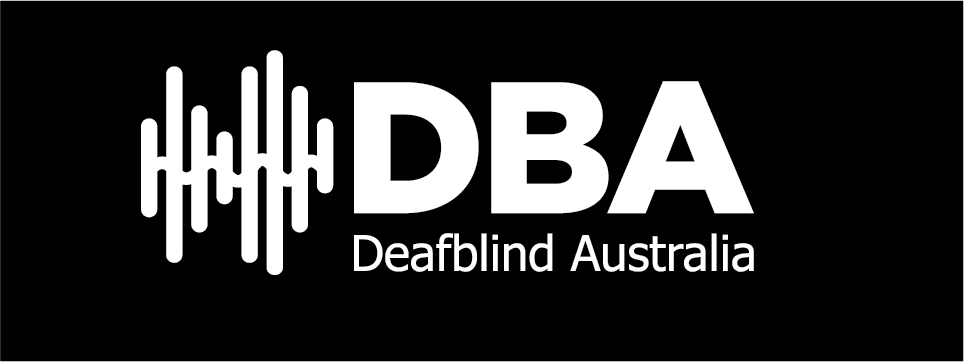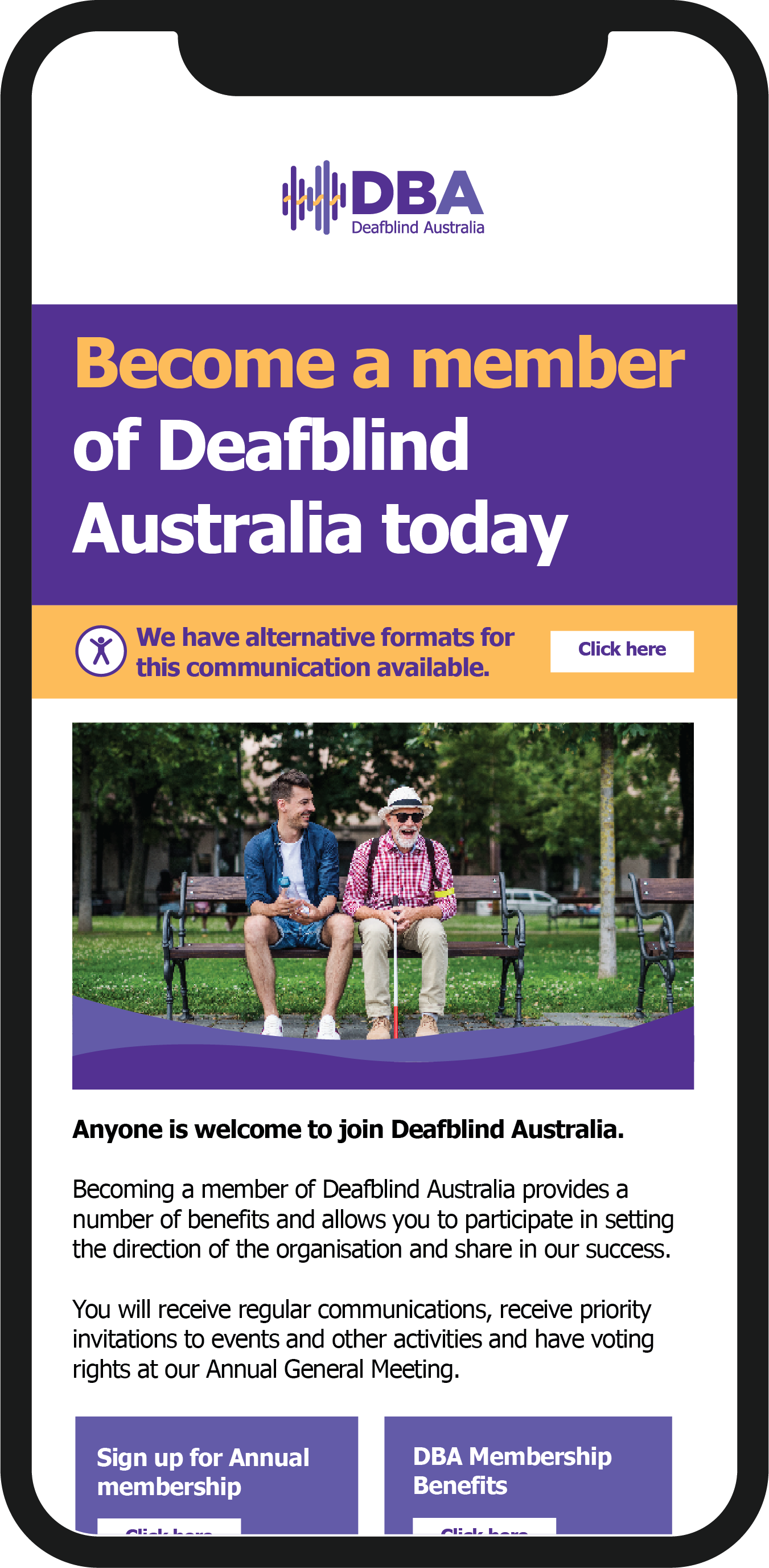Deafblind Australia – Concept 1 – Alternate Logo
Logo
- This logo concept is inspired by the visual light and audio sound spectrum
- It is modern and inclusive positioning Deafblind Australia as a national body for deafblindness
- The icon to the left of the text ‘DBA Deafblind Australia’ represents visual light waves and audio sound waves
- The vertical lines in violet and lilac represent the sound of DBA being spoken aloud
- The horizontal yellow line represents the visual of the DBA text
- The logo introduces the 3 brand colours
Logo stack
New logo positioned with other logos in the deafblind community including Deafblind Information Australia, Able Australia and Senses W.A..
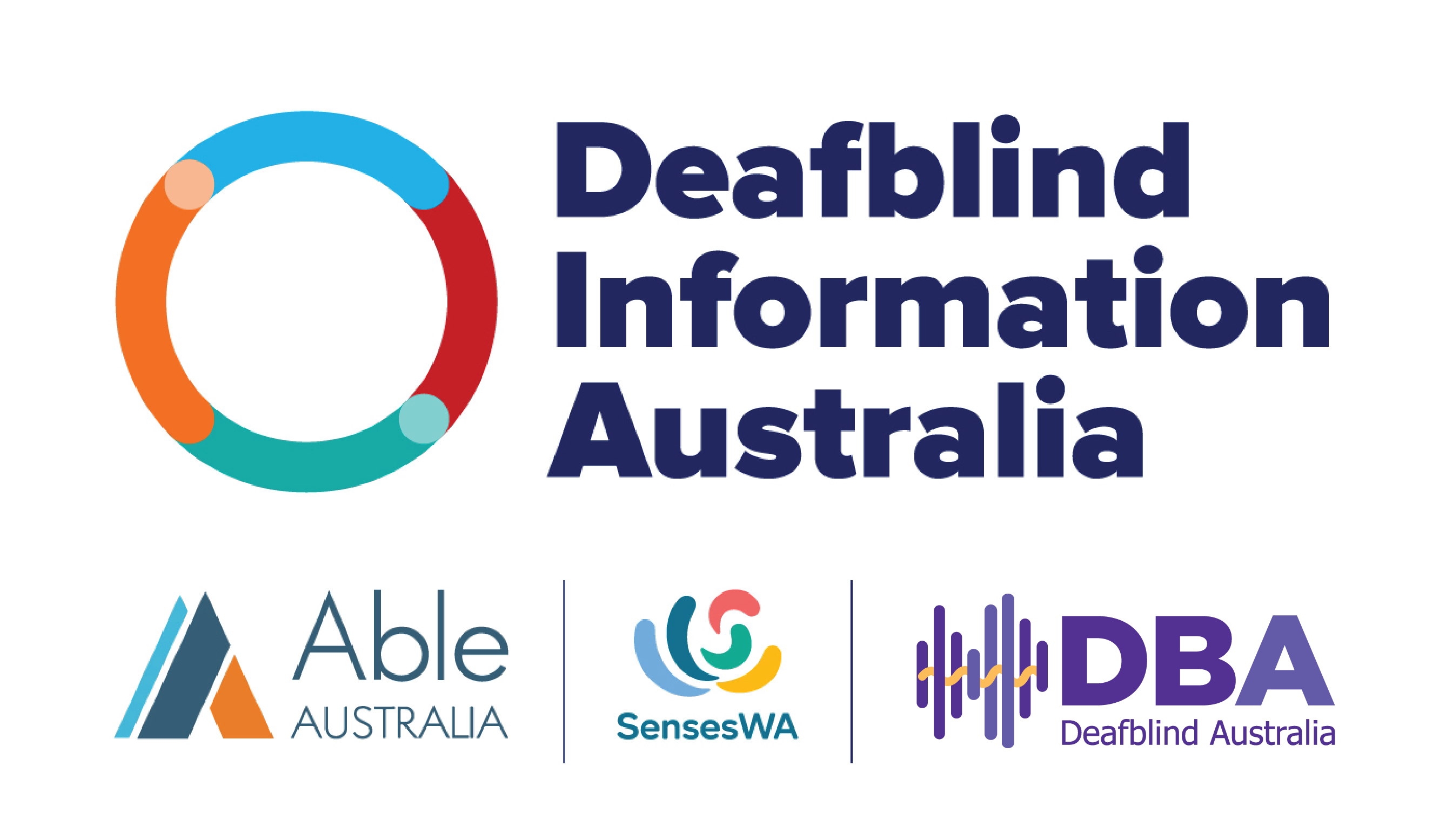
Colours
Primary colours: Violet (main) and Yellow (highlight)
Secondary colour: Lilac
I have chosen these colours because of their accessibility, meaning, positivity and trustworthiness.
Violet:
- Purple combines the calm stability of blue and the fierce energy of red. The color purple is often associated with royalty, nobility, luxury, power, and ambition
- Violet is one end of the visual light spectrum
Yellow:
- Yellow is associated with warmth, sunshine, and positivity
- It’s a colour that promotes activity and interaction
Accessibility:
- Violet may be used for text of any size on a white background
- Violet may be used for large text on a yellow background
- Black may be used for text of any size on a white or yellow background
- Yellow may be used for large text reversed out of a violet or black background
- Lilac may be used for large text on a white or yellow background
Colour codes:
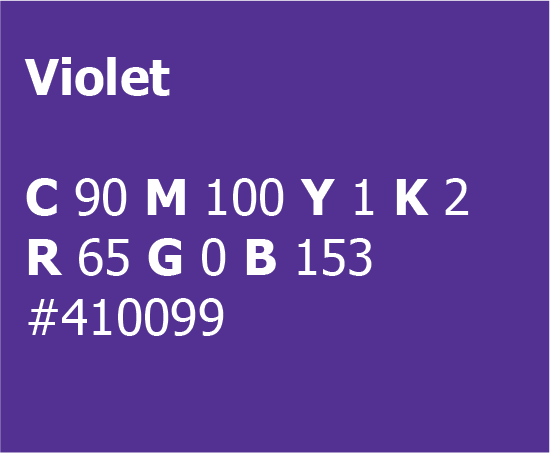
Violet
Pantone Violet C

Yellow
Pantone 136 C
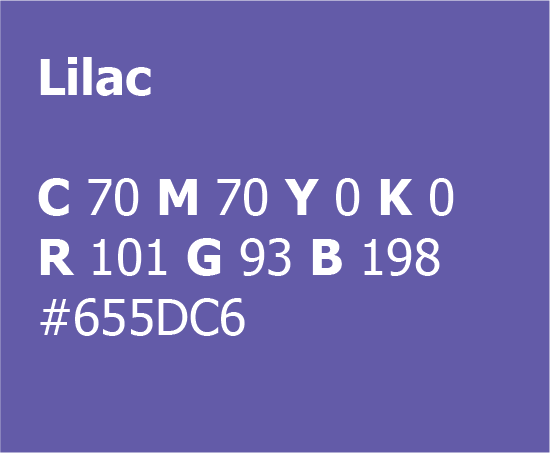
Lilac
Pantone 2725 C
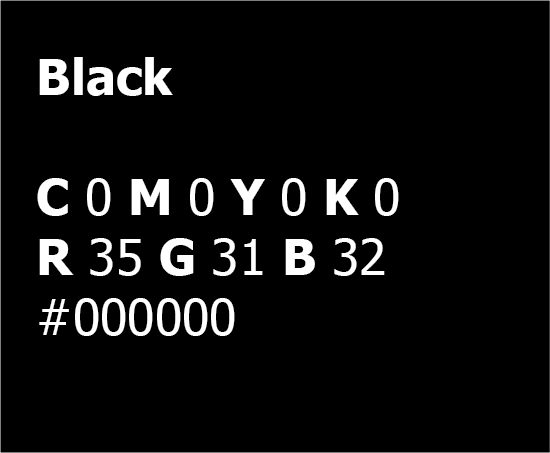
Black
Pantone Black C
Typography
The typeface used is called Tahoma. Tahoma is widely recognised as one of the most accessible fonts.
- Sans serif font
- Comes in Bold and Regular
- Developed to be accessible
- Headings and subheadings use bold
- Paragraphs use regular
Headings – Tahoma bold
Sub headings – Tahoma bold
Paragraphs – Tahoma regular
Business card
For all print materials, there will be a diagonal cut from the document to provide a tactile way for vision impaired people to know that there is a QR code within 3.5 inches of the corner. This is known as Berman Corner.
- Front of the card has the Deafblind Australia logo. The front also has a decorative curved yellow shape overlapped by a violet curved shape at the bottom of the card
- These curved shapes are graphic elements of the brand
- The back of the card has the name, position, phone number, email address and DBA web address. These details appear in the described order and are left aligned
- There is a QR code on the right side of the back of the card
- The QR code creates a new contact entry on your phone when scanned and includes all the same information that is printed on the card
- Uses Berman corner on the top right for QR code
- Top half of the back of the card has a violet curved shape

Letterhead
- Deafblind Australia logo in top right
- Has DBA web address and generic contact email address in the bottom left corner.
- Uses the violet and yellow curved shapes along the bottom of the page, overlapped in a similar style to the front of the business card.
Letterhead follower:
- Uses the violet and yellow curved shapes along the bottom of the page, overlapped in a similar style to the front of the business card and matching the letterhead design.
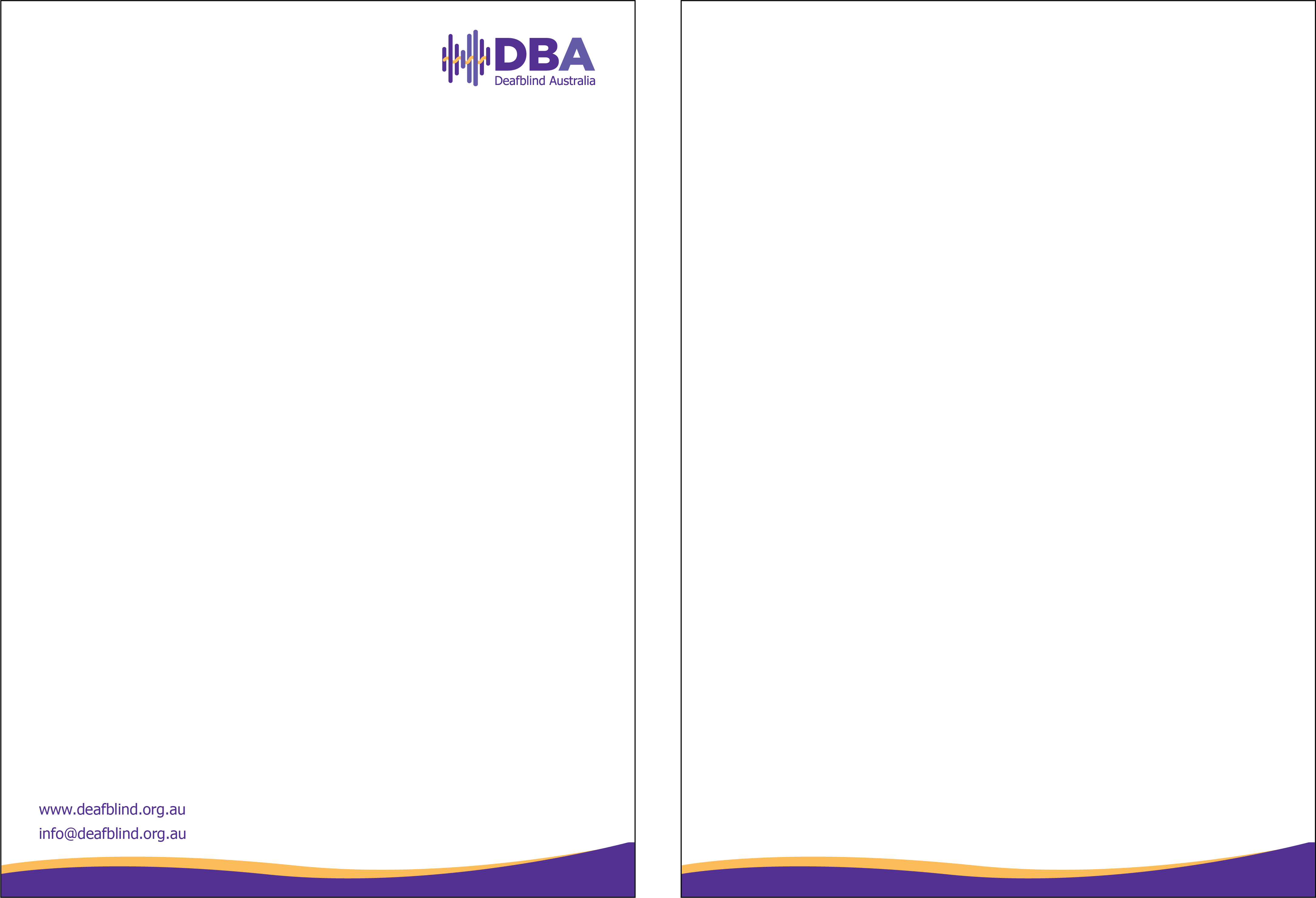
Poster
- One violet background example with yellow text and two colour logo
- One white background example with full colour logo
- Deafblind Australia logo in top right
- Uses a circle element from the logo to frame an image on the right side of the page
- Both posters have a yellow banner along the bottom of the page with an accessibility icon on the left, the text ‘Scan the QR code to view alternative communication formats for this document’, and a QR code linking to the resource on the DBA website on the right
- This yellow banner is a graphic device used across different print and digital elements directing the audience to alternative formats to suit their needs
- Has Berman Corner and QR code in the bottom right
- Design can be more flexible in terms of colours, as long as the main brand violet is used either for text or the background
- Yellow and lilac colours create positivity (ie. yellow represents positivity and sunshine) and increase engagement
- Violet and yellow curved shapes can be used along the bottom of the page or images, overlapped in a similar style to the front of the business card and matching the letterhead design
- Download pdf of posters
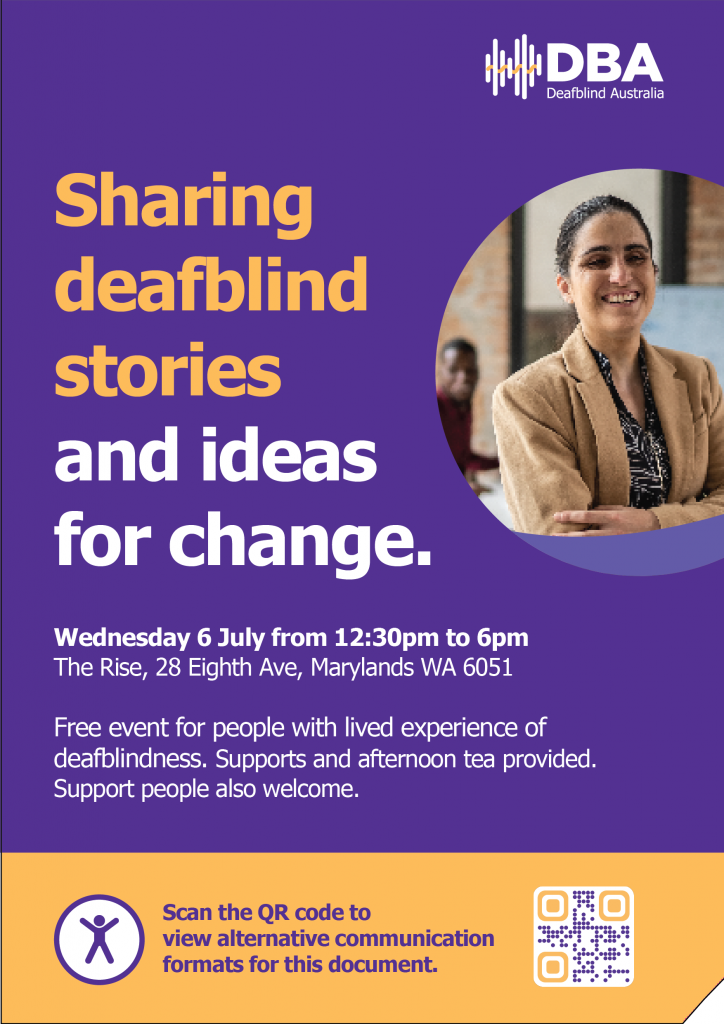
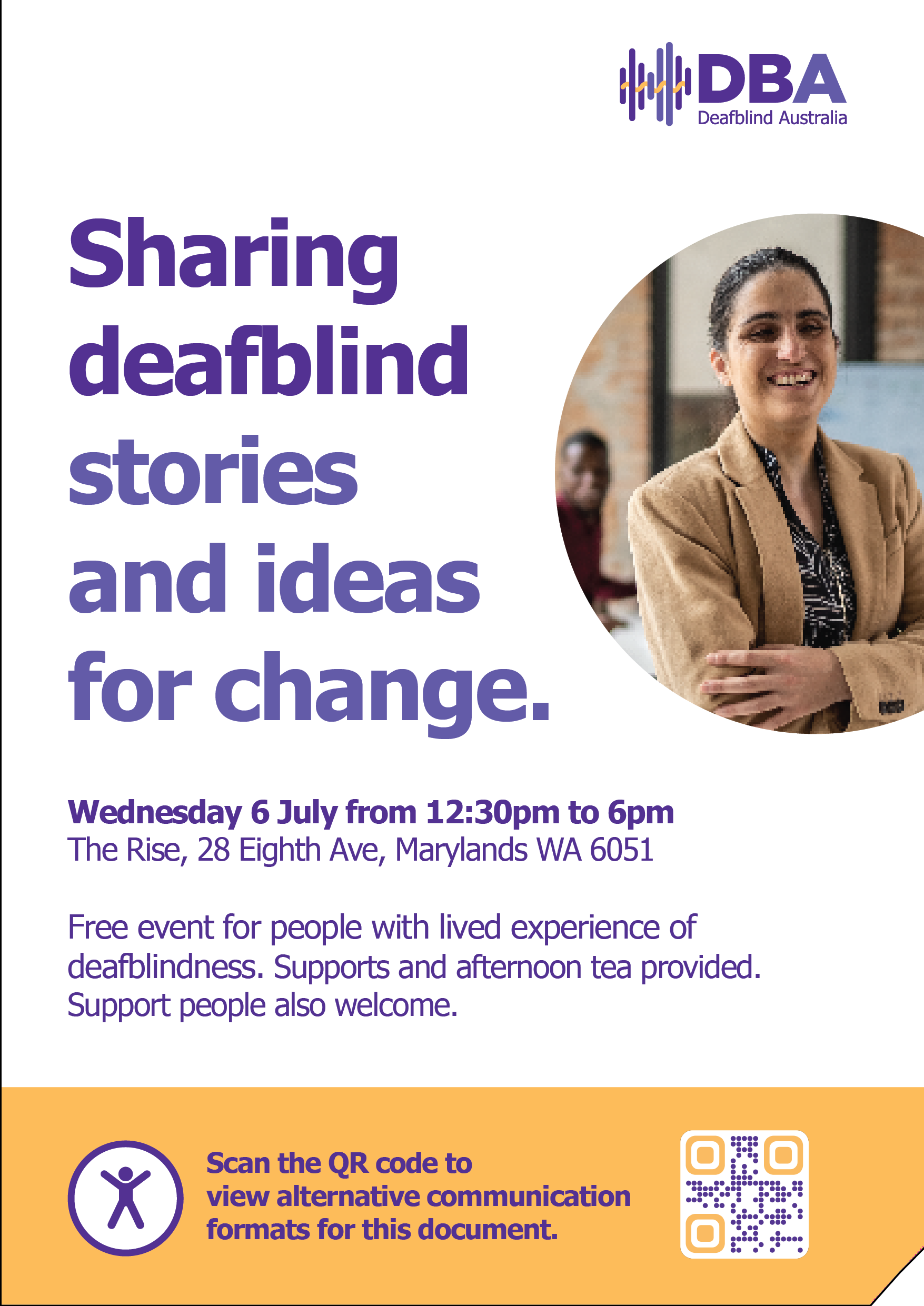
6 page DL brochure
- Deafblind Australia logo in the top right of the front page
- Uses a yellow banner – a graphic device to direct the audience to alternate document formats on the DBA website
- QR code in the yellow banner at bottom of the first page. Berman’s corner is on the bottom right corner of the page
- The title of this brochure is “What is deafblindness?” in white and yellow on a violet background (main document headings use purple banner where appropriate, this colour combination meets AAA standards for colour contrast for text)
- Frontpage features an image of two deafblind women enjoying a day out
- Yellow and lilac curved shapes are used along the bottom of the two of the images, overlapped in a similar style to the front of the business card and letterhead
- Contact information is easy to read on the back, with icons in white circles
- To read this brochure, download the pdf here
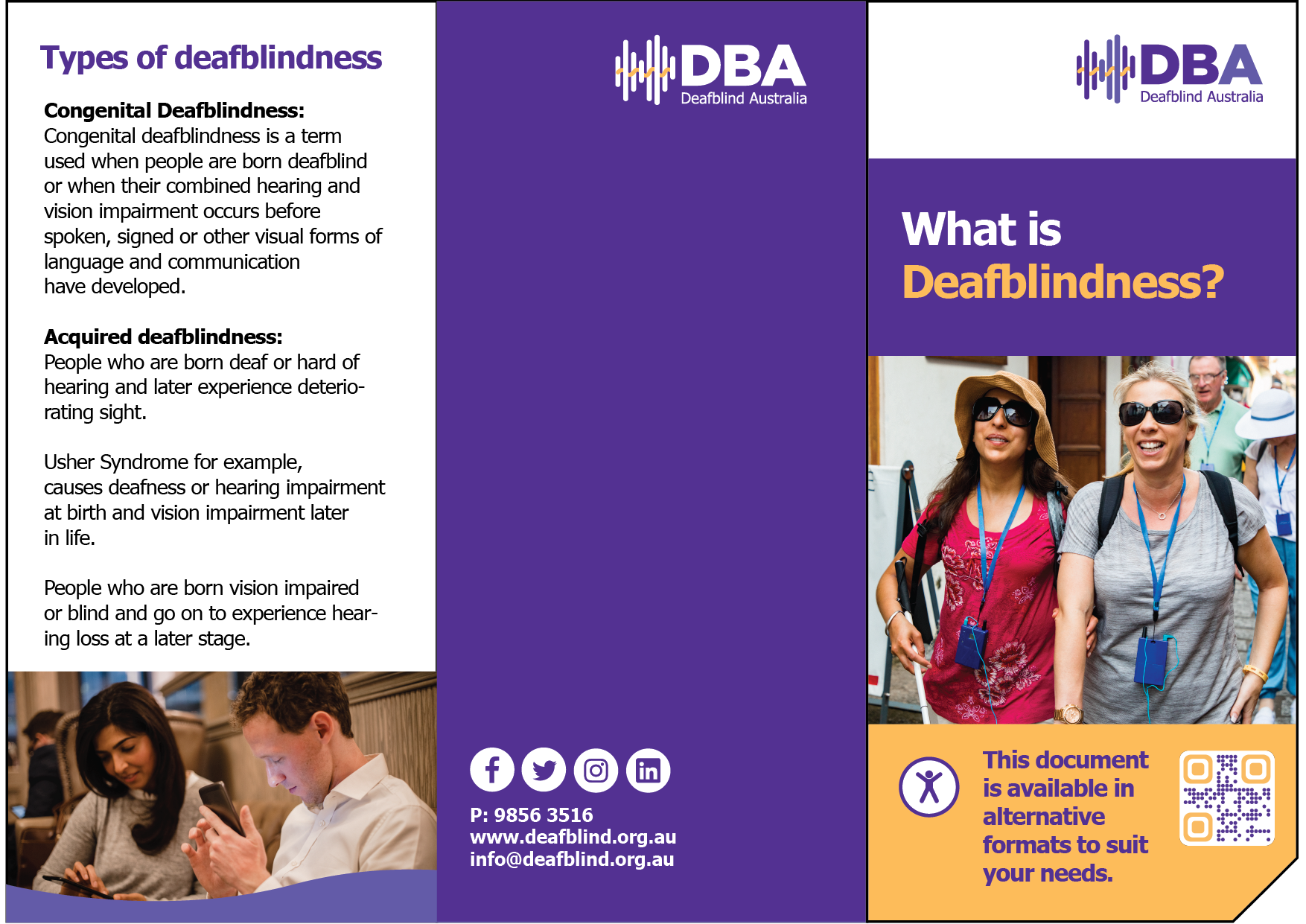
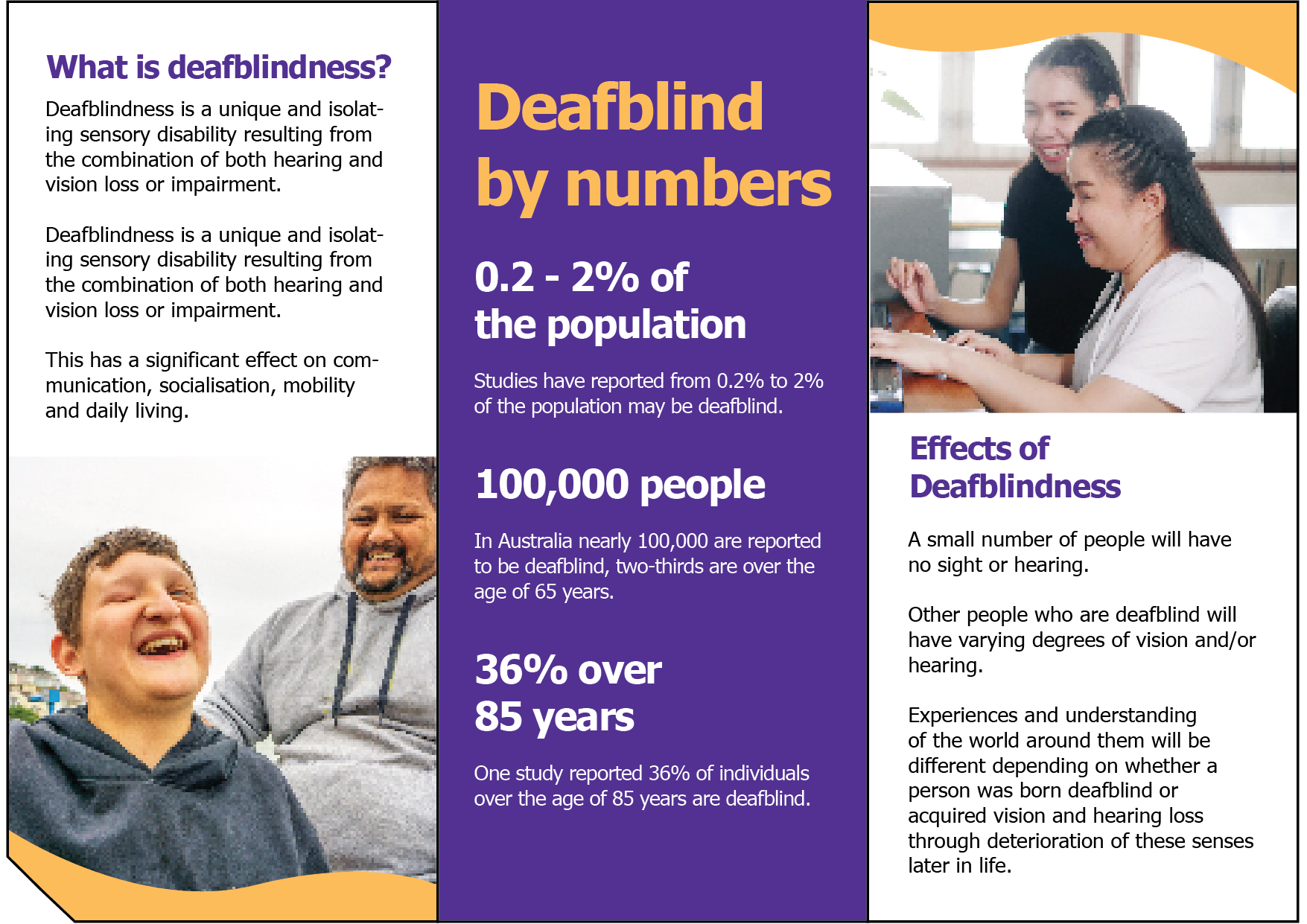
EDM (Email Newsletter)
- Deafblind Australia logo in top centre
- Violet banner below the logo, with yellow and white heading text
- Uses the yellow banner – a graphic device to direct the audience to alternate document formats on the DBA website
- Violet and lilac curved shapes are used along the bottom of the image, overlapped in a similar style to the front of the business card, letterhead and brochure
- Please see the pdf to read the sample e-newsletter, click here to download the pdf
